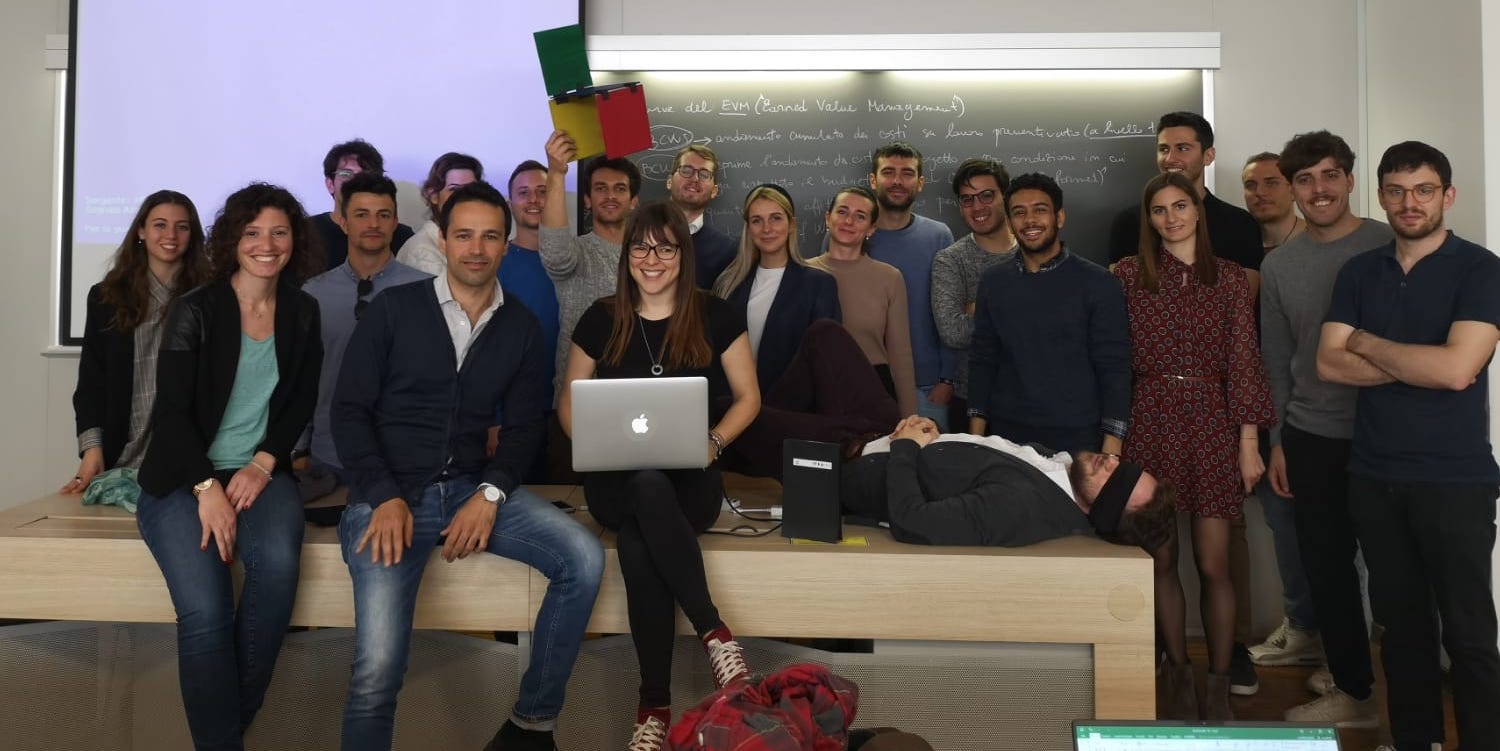
The role of a lean educator
FEATURE – What does it really mean to teach lean? The author reflects on this question and shares a few tips on how to successfully engage learners in different environments.
Words: Monica Rossi, Assistant Professor, Politecnico di Milano
What does it mean to be a lean educator?
As an Assistant Professor at one of Italy’s leading university, this is a question I ask myself very often. In my mind, anyone who teaches others about lean thinking and practice is a lean educator – this includes actual teachers like me, but also managers or coaches.
It’s important not to forget that we are all learners, too, striving to be lean ourselves. That means living and breathing the principles every day, starting with ensuring the needs of our customers (aka our students) always take center stage.
This, however, requires absolutely clarity over who it is that we are teaching, because the challenges we will face as educators vary quite a bit depending on who is in front of us.
WHO DO WE TEACH?
It is critical for us educators to truly understand who we are going to be teaching, if we are to really have an impact on our students. Up until now, I have been used to teaching two types of students primarily: Master’s Degree students and business executives. The two experiences couldn’t be any more different!
Teaching students in a university gives us an opportunity to shape their thinking, which in most cases is free of constraints and preconceptions. When trying to teach lean in an organization, however, we are typically faced with long-established cultures and seemingly unshakable ways of thinking. Anyone who has engaged in a lean transformation will know of the difficulty in changing hearts and minds, and therefore understand the importance of lean education in companies.
To me, both roles are critical. Whether we are changing mindsets or molding new ones, our role as lean educators couldn’t be more important. The future of our Community hinges on our ability to get people excited about lean and help them to understand it.
The difficulty of getting learners to absorb and embrace lean is not the only difference between teaching university students and business executives. There is also a generational issue playing out here: university students tend to me Millennials, whereas executives are more often than not Baby Boomers or Generation X. Both have their own way of learning. And if that wasn’t hard enough, we already have a new generation (Generation Z) knowing on our door. With them, we can expect a completely different ballgame.
Generation Z people are fast learners. They are entrepreneurial and environmentally conscious. They are very engaged and expect answers right away. They were born in the digital age and are, therefore, incredibly tech-savvy (and likely to have never set foot in a library). Their problem is that they tend to have a very low attention span – 8 seconds (a goldfish has 9 seconds!) – something that is happening to more and more of us, as technology (and social media) get a bigger influence on our every-day lives. This is forcing us to rethink the way we teach.
HOW DO WE TEACH LEAN?
Given the dramatic changes our society is undergoing, is it okay to use old teaching methods to teach new generations of learners? And can we truly expect positive outcomes if we do? I think it’s crucial that we adapt our teaching method to the changing circumstances all around us. We need to innovate to reflect the dynamism of our society.
A now established way of teaching is using video, and we expect this trend to stay with us for the foreseeable future. Generation Z individuals spend up to 10 hours a day using technology, and a good portion of that is to watch videos. Seventy percent of them say that video helps them to learn. Not to mention the fact that their short attention span calls for simple and fast messages, which video is great at delivering.
The content we teach also needs to change. Once again, lean comes to the rescue here. For a few years now, with digitalization and Industry 4.0 becoming some of the most popular topics of conversations in both Board Rooms and academic settings, people have been convinced that data will fix the world. Give people data, and they will thrive. Data – the Holy Grail that will solve all of our company’s woes. The problem is that humankind has access to so much information these days that it is becoming imperative to find a way not to drown in it. It is not enough to gather data; we need to gather valuable data. Who needs this information? Why? In which format? There is no point in giving information to someone who doesn’t need it. Lean thinking creates critical thinkers and good decision makers and teaches us to understand what information is needed by who, when, and why. The real Holy Grail is to use data in a smart way to solve societal problems. I think there are big lessons to be learned here for us educators, as we are called to design curricula or develop a training for a company.
If we are to impact the world in a meaningful way, our teaching approach needs to become more holistic, too. While my primary focus as a professor is lean product development, I also teach my students the circular economy, product life cycle management, and lean startup.
We also need to change the way we engage students. Games have always worked really well (I use a LEGO-based serious game to teach my students about set-based concurrent engineering and another one called the Life Cycle Perception Game to teach them about product life cycle), but they are not the only way. I also find that going to the gemba helps immensely: for instance, I take executives on a learning trip to Japan every year to help them appreciate different aspects of lean thinking that they wouldn’t be able to witness within their workplace.
Finally, I put a lot of emphasis on learning by doing. The days a teacher would get to the board and talk at people for an hour or two are gone. To ensure students stay interested (and awake), it is necessary to keep them actively engaged in practical activities. At the beginning of my course, for instance, I create a team of students and ask each member to pick a role, as if they were part of a “cross-functional” team in a company. I then give them a challenge (“Create a product that makes the life of Monica – a busy, travelling professor – easier”) and ask them to prepare a prototype of a product. Over the course of the classes, I teach them all the concepts they need but I also ask them to put them in practice. I find this to be a much more effective way of teaching them: it engages them, it entertains them, and it helps them to learn from their work and mistakes.
The figure of a lean educator is very diverse. But there is one thing we all have in common: the challenge of finding the best way to teach our students and transform them into lean thinkers. It’s important we keep the conversation going on how we can best do that
THE AUTHOR

Read more


CASE STUDY – The story of this NGO shows how visualizing the work enables improvement and removes barriers among teams. It is a first, fundamental step towards a lean transformation.


FEATURE – The use of TWI is widespread, but course material doesn’t tell us much about rolling out programs and ensuring their sustainment over time. The authors come to the rescue, discussing how we can ensure the success of TWI.


INTERVIEW – In another interview in our series that looks at global events from a lean perspective, we discuss politics, the challenges to democracy and the phenomenon of populism.


FEATURE – As many retail giants are finding out, great customer service is no longer enough to ensure competitive advantage in a world where the digital revolution is taking no prisoners.

